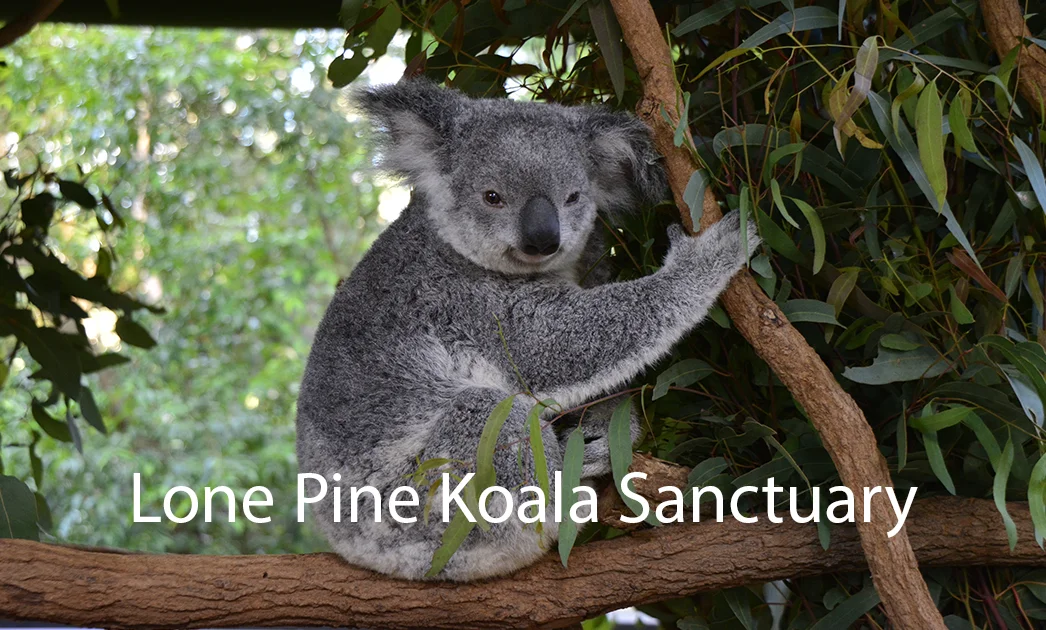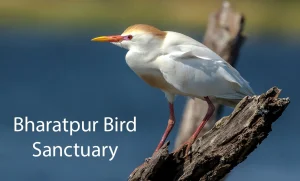Lone Pine Koala Sanctuary
Lone Pine Koala Sanctuary Location
The Lone Pine Koala Sanctuary is conveniently located in the Brisbane suburb of Fig Tree Pocket, close to the University of Queensland’s St Lucia campus. It sits on a beautiful 18-acre parcel of eucalyptus forest along the Brisbane River, one of the few remaining strips of natural bushland left in the area. This environment provides the 130+ koalas living at the sanctuary with clean air, natural habitat, and a healthy diet of native gum leaves. As Australia’s largest koala sanctuary, Lone Pine has a wide range of indoor and outdoor enclosures to house its resident koalas, along with other native Australian wildlife like kangaroos, wombats, Tasmanian devils and reptiles. Despite its proximity to urban Brisbane, a visit to Lone Pine provides a chance to get close to Australian wildlife in a tranquil, natural setting.
History
The Lone Pine Koala Sanctuary opened in 1927 and is the world’s oldest and largest koala sanctuary. Located in Brisbane, Australia, it was founded by Claude Reid and his wife Esme to provide a safe habitat for sick, injured, and orphaned koalas. At the time, habitat destruction and hunting had decimated koala populations in southern Queensland. The sanctuary started with just two koalas named Jack and Jill, but soon expanded as more rescued koalas were brought to the facility over the years. Today, the Lone Pine Koala Sanctuary plays a vital role in conservation, research and education about one of Australia’s most iconic mammals. Over its nearly 100 year history, the sanctuary has cared for over 130,000 sick or injured koalas.
Lone Pine Koala Sanctuary Animals
Koala habits and characteristics
Koalas are arboreal marsupial mammals native to Australia. They spend most of their time nestled in the branches of eucalyptus trees, which provide both food and shelter. Koalas are mostly active at night and sleep up to 20 hours per day. These solitary animals stake out their own tree territories and only come together to breed. Koalas get most of their moisture from the leaves they eat, since they rarely climb down to drink water. A koala’s fur insulates it from heat and cold while also providing camouflage against tree trunks and branches. Koalas have a highly adapted digestive system to break down toxic eucalyptus leaves, their main diet.
Koala conservation efforts
Koalas are currently listed as vulnerable to extinction due to habitat loss, dog attacks, car strikes and disease. The Lone Pine Koala Sanctuary plays a lead role in conservation, seeking to ensure the survival of this unique Australian marsupial. As a key koala breeding facility, Lone Pine helps maintain a genetically diverse captive population. The sanctuary also operates a 24-hour rescue hotline to aid sick or injured koalas. Conservation efforts at Lone Pine further include public education, support for habitat restoration, and tracking wild koala populations. Researchers monitor sanctuary koalas for health insights that benefit wild koalas as well.
Popular resident koalas
Some of Lone Pine’s favourite koalas include Atlantis, Coco, Eucalyptus and Matilda. Atlantis arrived at the sanctuary after his bushland home became a housing development. Coco is the dominant female who determines which koalas can reside in her trees. Eucalyptus enjoys relaxing on his back on the lower branches of his favoured tree. Matilda always draws a crowd when she climbs down to the ground to change trees, putting on quite a waddling show. From elderly residents to lively young joeys, each koala has a unique personality and story to tell. Lone Pine provides them all a safe and nurturing home.
Native Australian Animals
Kangaroos
Several species of kangaroo can be found bouncing around the walking tracks at Lone Pine. Red kangaroos are the largest and can leap up to 30 feet in a single bound thanks to their powerful hind legs and large feet. The eastern grey kangaroo is also common and feeds in early morning and late afternoon. Visiting the kangaroo enclosure is a highlight for guests who can purchase bags of feed to offer these iconic marsupials. Kangaroos use their long tails for balance and support when hopping. Fun fact – female kangaroos have a pouch on their belly to carry baby joeys.
Wombats
The cuddly-looking common wombat resides in a shady enclosure at Lone Pine meant to replicate its natural underground forest habitat. These stocky mammals have backwards-facing pouches to keep dirt out while they are digging. Wombats use their rodent-like front teeth and strong claws to carve large burrows for shelter. Though wombats seem slow and docile, they can run up to 25 mph and deliver nasty bites if provoked. Most active at night, wombats mainly eat grasses and roots. Visitors can watch the wombats grazing and resting in their den-like homes.
Tasmanian Devils
Found only on the Australian island state of Tasmania, the Tasmanian devil has a ferocious reputation. These scavengers use their extremely strong jaws and teeth to crush bones and devour entire carcasses. Tasmanian devils at Lone Pine receive meat supplements as well as natural foods. Their enclosures are designed with features to climb, scratch, dig and sleep. Tasmanian devils communicate with hisses, growls and distinctive screeches, mainly around feeding time at dusk when they are most active. These unique marsupials carry their young in a rear-facing pouch.
Platypuses
The platypus is one of the more elusive Lone Pine residents, active mainly at dawn and dusk. This egg-laying mammal has adaptations fitting its aquatic lifestyle like webbed feet, dense waterproof fur and a broad flat tail. Platypuses use their rubbery snouts and electric location sensors to find freshwater prey like insects, worms and shrimp. A underground viewing area allows visitors to watch the platypuses swimming gracefully around their pond habitat. Twice a day during educational sessions, platypuses are coaxed out of the water using food to provide visitors a rare glimpse.
Park Amenities and Offerings at Koala Pine Sanctuary
Walkthrough Exhibits – Lone Pine Koala Sanctuary Tour
The Lone Pine Koala Sanctuary spans 18 acres of natural bushland along the Brisbane River featuring multiple walkthrough exhibits. Visitors can stroll along dedicated pathways and raised boardwalks that snake throughout the tranquil park setting. These walkways allow guests to safely observe over 130 rescued koalas living contentedly high in their eucalyptus tree homes. Informational signs detail the life cycles, behaviors and conservation efforts supporting these iconic marsupials. Beyond koalas, guests will also encounter other native Australian wildlife in naturalistic habitats as they explore including kangaroos, wombats, dingoes and flying foxes.
Shows and presentations
A highlight for many Lone Pine visitors are the scheduled shows and educational presentations that provide additional opportunities to learn about various Australian animals. The sheep dog shows demonstrate these intelligent herding dogs maneuvering sheep around an arena. Snake and reptile presentations include facts about species like the taipan, lace monitor and crocodiles while highlighting conservation issues. Additional programs feature dingoes, Tasmanian devils, wedge-tailed eagles and other native wildlife. Guests can check printed park maps for times and locations of shows to plan their day.
Picnic facilities
When it’s time for a lunch or snack break, visitors will find plenty of picnic tables and grassed areas perfect for relaxing around the tranquil lagoon. The outdoor picnic facilities have shades and scattered treetop cover for warm summer days. There are also several kiosks and food outlets on the grounds for grabbing drinks, snacks, ice cream and light meals. The licensed Portside Café provides hearty hot dishes with scenic views of the Brisbane River. With so much territory to explore, the dining options allow refueling to continue wildlife encounters.
Lone Pine Koala Sanctuary Gift Shop
Before departing this Queensland koala sanctuary, guests will want to stop by the souvenir shop near the entrance gates. Along with standard gift shop fare like postcards, keychains and magnets, there are unique Australian-made items. Shoppers can browse selections of boomerangs, didgeridoos, woolen rugs decorated with indigenous dot art and Akubra style bush hats. To remember new furry friends, visitors can adopt a symbolic koala or wombat. Educational toys, books and apparel featuring Aussie animals make meaningful reminders of a trip to the Lone Pine sanctuary as well.
Visiting the Lone Pine Koala Sanctuary
Hours of operation
The Lone Pine Koala Sanctuary is open daily from 9am-5pm, with last entry tickets sold at 4pm before closing. Hours are extended during peak seasons like school holidays. The park is only closed on Christmas and Anzac Day. Guests should plan on spending 2-4 hours to explore the extensive park grounds and attractions at a relaxed pace. Note that some animal habitats are less active during the middle of hot days when species like koalas and kangaroos are napping and staying cool. Early morning or late afternoon visits provide more wildlife sightings.
Lone Pine Koala Sanctuary Tickets
Standard entry admission starts from $36 for adults, $22 children (ages 4-13) and $88 families (2 adults + 2 children). Additional activity packages can also be purchased at check-in like photo opportunities holding a koala or feeding kangaroos. Discounted tickets can be found via advance online booking. Annual membership options are available too providing year-round entry and benefits. Visitors should budget extra funds for food purchases, keepsake photos and souvenirs. Cash and major credit cards are accepted on premises.
Getting there and parking
Lone Pine Koala Sanctuary is located just 12km southwest of Brisbane city Centre. Those driving should take the M3/Coronation Drive exit toward Mount Coot-tha and follow signage. Free standard parking lots are available on-site along with $10 premium closest carparks. Public buses leave from the Queen Street Mall terminus stopping near the sanctuary entrance. Group tours often include sanctuary transports as this is one of Queensland’s top rated attractions. Uber or taxi services can reach this Fig Tree Pocket address easily as well.
Tips for visitors
Guests should be prepared with hats, sunscreen and comfy walking shoes to best enjoy their wildlife encounters. Bringing water bottles and refilling at fountains around the park helps cut down single-use plastics. Mark prime koala sighting spots identified on maps to capture photos without disturbing natural behaviours. Check schedules for feeding presentations allowing visitors to get close views as animals dine. Visit every habitat since timid species like echidnas and platypuses are sometimes easier to find earlier or later in the day when less crowded. Most importantly, respect signs and instructions regarding both human safety and animal welfare throughout the sanctuary.
Importance of the Lone Pine Koala Sanctuary
As the world’s first and largest koala sanctuary, Lone Pine plays an invaluable role in conservation, research and public education regarding this iconic marsupial. By providing lifetime care for sick, injured and orphaned koalas, Lone Pine gives back to a species threatened by habitat destruction, cars, dogs and disease. Its leading captive breeding program maintains genetic diversity while research conducted benefits conservation of wild populations. Over its nearly 100-year history, Lone Pine has highlighted koalas’ plight to motivate habitat protection efforts across Australia. Just as integral, more than 12 million visitors have connected with native wildlife first-hand, building empathy for conservation challenges facing koalas and other ecologically vulnerable Australian animals.
Lone Pine Koala Sanctuary Animals
Looking ahead, Lone Pine aims to continue expanding as both a world-class sanctuary and center for conservation public outreach. Plans include building state-of-the-art facilities to house an additional 200 koalas with advanced climate control systems to deal with rising temperatures. Extended tourism offerings will educate even more visitors about koalas and channel revenues toward habitat acquisitions to link isolated populations. Lone Pine also seeks to serve as a model for sanctuaries across Australia and globally in providing exceptional, ethical wildlife tourism paired with progressive conservation research and action. From two koalas in 1927 to over 130 today, Lone Pine’s growth has mirrored rising awareness of preserving nature’s incredible but imperiled creatures.



